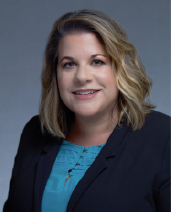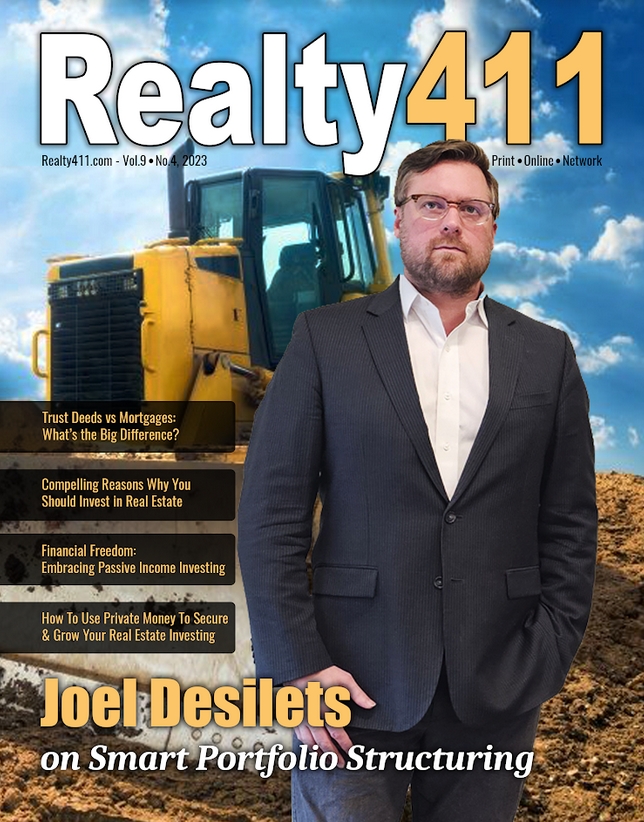Key Do’s and Don’ts of Probate Leads: How to Find Motivated Sellers
By Kristine Gentry, VP of Innovation, US Probate Leads
As the real estate market continues to tighten, successful investors are diversifying their lead streams and trying new sources. One of the most underutilized sources of leads are probate leads. Why are they underutilized?
Primarily because people do not understand the opportunities that are available or how to quickly and easily obtain probate leads. In addition, some investors do not know what to do with probate leads once they have them. If you are considering using probate leads to increase your opportunities, or if you already have probate leads, below are some tips for helping you make the most of your leads.
What Are Probate Leads?
Probates leads include information on property that is part of a legal filing after the death of a loved one. These cases include many types of property owned by someone who has passed away including homes, vacation homes, cars, RVs, businesses, commercial property, rental property, artwork, and other personal property. These cases are listed in each county after the death of a loved one where a probate needs to be filed and are controlled by the local court.
Oftentimes, this property has to be sold in order to pay for medical, tax, legal, and funeral expenses. The court will assign an Executor to handle the sale of the property so that these obligations can be met and the heirs can receive any remaining funds.
As part of an overall investment strategy, probate leads are valuable because they come with very motivated sellers. Executors need to deal with the property that is in the probate filing in order to meet the court requirements. Many times, they need cash in order to pay bills that have been left after the passing of their loved one.
Often, they do not live near the inherited property and simply want to sell it as quickly and easily as possible. If they know the property needs updates, they may not want to have to deal with that hassle and would rather sell the property at a discount. In addition, since they inherited the property, anything they make on the property is extra for them so they are less worried about getting maximum value for the property.
Probate properties may be available for thirty to fifty percent off of the market price and are generally available for a quick closing. So, probate leads are a great way to diversity and increase your lead source. But once you have probate leads, what do you do?
Probate leads are not like all other leads and should be treated differently. Do offer to help the executor/heir. Remember they have recently suffered a loss and are grieving. Since probate leads are generated when probates are filed in a local courthouse after a death, it is necessary to be especially warm and considerate when speaking with executors and heirs. They have recently gone through a very tough time and are probably overwhelmed with the loss of their loved one as well as all the legal and financial issues they are faced with as the executor of the estate.
For some executors/heirs, the last thing they have the time or energy to deal with is a recently inherited piece of property. They may not live near the property and may not have the time to take care of basic issues with the house. For instance, suddenly having another yard to maintain can seem daunting.
You can help by offering to mow the lawn, trim shrubs, or water plants. Sometimes the heir or executor simply need someone to talk to. You can be that friendly person they can speak with. Offer condolences and let the executor or heir take the lead in how much they want to talk about their loved one. Simply asking what they need help with can go a long way. Do continue to reach out to the executor/heir. One mailing or phone call will not be enough.
Unlike other leads sources, it is hard to know when will be the right time to reach out to an executor or heir. In some cases, heirs want to sell property as fast as possible. They may be ready to sell quickly so they can move on. In other cases, heirs are reluctant to sell their loved one’s property.
They may hold onto it for months before feeling pressured to do something with the property. We have learned that it is important to regularly reach out to executors and heirs and recommend doing so for at least a year. Sending a mailer or making a phone call every other month is a good timeline. The important thing is for the executor or heir to have your contact information available when they decide they are ready to sell.
Do be honest about how you can help and why it is beneficial to you both. Executors and heirs have a lot going on. They will know that you are interested in making money and not just a stranger who showed up to help out of the blue. It is best to be honest and explain that you make money by purchasing properties below market value, fixing them up, and reselling them. And that it might be helpful for them to sell you their property below market value so that they do not have to deal with the hassle of fixing up a house to sell and then listing it.
Remind them that you can help them get cash quick, but there are no guarantees of how long it would take for the house to sell at full value.
This is a win/win situation for you and the executor or heir, and you should be up front about that. Don’t forget about historical leads. Heirs often don’t sell right away. New users of probate leads often think that the leads have a short time on the market. However, that is not the case. Generally it takes some time for Executors to get all of the paperwork filed and to go through their loved one’s things before they are ready to sell.
There is also the process of grieving, which can cause Executors to hold onto a property for a time before they are willing to sell it. With these parameters in mind, real estate investors who are looking at probate leads will find that Executors who are selling property may not be ready to sell for twelve months after the filing. In many cases, the leads are still viable eighteen months after the passing of a loved one. This allows for plenty of time for real estate investors to make contact with the Executor. Therefore, a successful probate investing practice should include the usage of historical leads. Don’t try to get leads on your own. Purchase them from a reputable source.
Many investors have attempted to gather leads themselves from courthouse records and quickly grew tired of the painstaking and time consuming process of doing so. Now, there is no need to gather these records on your own. Several companies provide probate leads for you. Most specialize in only a handful of counties – often counties where probates are available online. However, some companies have researchers trained to go to courthouses where these records are not available online, which is the case for the vast majority of counties.
U.S. Probate Leads is a family-owned company that has been in the probate business for over 15 years. We have more experience and offer high-quality ads that include skip tracing for executors and addresses.
Don’t waste your time gathering probate leads. Instead, contact us to learn about why our leads are the best on the market. Get Access to Probate Leads Today. Using probate leads is a great way to find more leads in your area as a real estate investor. With long-term viability and Executors that are motivated to sell, you will see that probates are a way to quickly find discounted properties.
If you are looking for diversity in your lead package, then you can get access to probate leads easily and quickly by vising US Probate Leads. We offer county by county listings of the probate leads listed in your area delivered directly to your inbox. Each county in the United States is covered by our trained team of lead specialists. Our team makes sure that you have the leads that you need in order to make your business grow.
Want more information?
 You can visit us at www.usprobateleads.com today and get more information on our lead services or sign up. In addition to our lead service, we also offer seminars, webinars, eBooks, software and individualized mentoring for dedicated investors. Contact us today for more information and learn how we can help you to meet your real estate goals.
You can visit us at www.usprobateleads.com today and get more information on our lead services or sign up. In addition to our lead service, we also offer seminars, webinars, eBooks, software and individualized mentoring for dedicated investors. Contact us today for more information and learn how we can help you to meet your real estate goals.
Probate Leads Available Now – In Your Area US Probate Leads has access to virtually any county in the United States, meaning regardless of where you live, you can start receiving leads monthly.
Go to the US Probate leads site: www.usprobateleads.com, click on your state and get started. To get a 10% discount, place an order before September 30th. Use discount code “Realty411.” Or you can contact them directly at: (877) 470-9751.
Now is the time to make your mark in this little-known niche – never before have more properties become available than will in the coming years. Becoming a US Probate Leads subscriber could really be the start of a whole new future, a more lucrative career, and an exciting investment opportunity.
– Article By Kristine Gentry, VP of Innovation, US Probate Leads
DOWNLOAD THIS ARTICLE AS A PDF NOW





 I came up with the following rules of successful real estate investing over my many years of successes and failures. These are the same rules I follow today and share with our clients at Norada Real Estate Investment.
I came up with the following rules of successful real estate investing over my many years of successes and failures. These are the same rules I follow today and share with our clients at Norada Real Estate Investment. 7. DIVERSIFY ACROSS MARKETS
7. DIVERSIFY ACROSS MARKETS





 By Jillian Ivey Sidoti, Esq.
By Jillian Ivey Sidoti, Esq. Yes, this is a very boiled down step-by-step. Yes, you will need the advice of a professional to help you along the way. However, you need to realize that if you do give all the above steps the appropriate amount of attention, there is no reason that you cannot raise the capital you need.
Yes, this is a very boiled down step-by-step. Yes, you will need the advice of a professional to help you along the way. However, you need to realize that if you do give all the above steps the appropriate amount of attention, there is no reason that you cannot raise the capital you need.
 As the new kids on the block, the business moguls captured a very large percentage of the market in a very short span of time. A large percentage of their competition has been in the private money lending sector for 20 years or more. Mehra added that the industry had always been something of an “intuitive-based” one, which both men felt kept it from growing like it could. “We wanted to deliver structure,” said Mehra. “We wanted to shift the industry from the whimsicality it had.”
As the new kids on the block, the business moguls captured a very large percentage of the market in a very short span of time. A large percentage of their competition has been in the private money lending sector for 20 years or more. Mehra added that the industry had always been something of an “intuitive-based” one, which both men felt kept it from growing like it could. “We wanted to deliver structure,” said Mehra. “We wanted to shift the industry from the whimsicality it had.” “Thanks to the stock market crash, several savvy financiers have a sour taste in their mouths, yet are still hungry for yield,” said Mehra. “We are seeing people, who would otherwise have investment portfolios centered around Wall Street now, deviating into real estate.” Today, instead of owning Microsoft as a growth stock, youthful investors would rather invest in assets they can hedge. The emerging generation with access to capital doesn’t have faith in the stock’s paper and would rather place funds into something concrete. At the end of the day, a hard asset like real property is never worth zero. They can hang their hat on that!
“Thanks to the stock market crash, several savvy financiers have a sour taste in their mouths, yet are still hungry for yield,” said Mehra. “We are seeing people, who would otherwise have investment portfolios centered around Wall Street now, deviating into real estate.” Today, instead of owning Microsoft as a growth stock, youthful investors would rather invest in assets they can hedge. The emerging generation with access to capital doesn’t have faith in the stock’s paper and would rather place funds into something concrete. At the end of the day, a hard asset like real property is never worth zero. They can hang their hat on that! Mehra and Morsi both feel strongly on not being viewed as a corporation, but as a part of a business network working conjunctively to meet each other’s needs. Out of 360 plus transactions that they’ve written, only two notices of default have occurred.
Mehra and Morsi both feel strongly on not being viewed as a corporation, but as a part of a business network working conjunctively to meet each other’s needs. Out of 360 plus transactions that they’ve written, only two notices of default have occurred. For information about MOR Financial visit
For information about MOR Financial visit 



